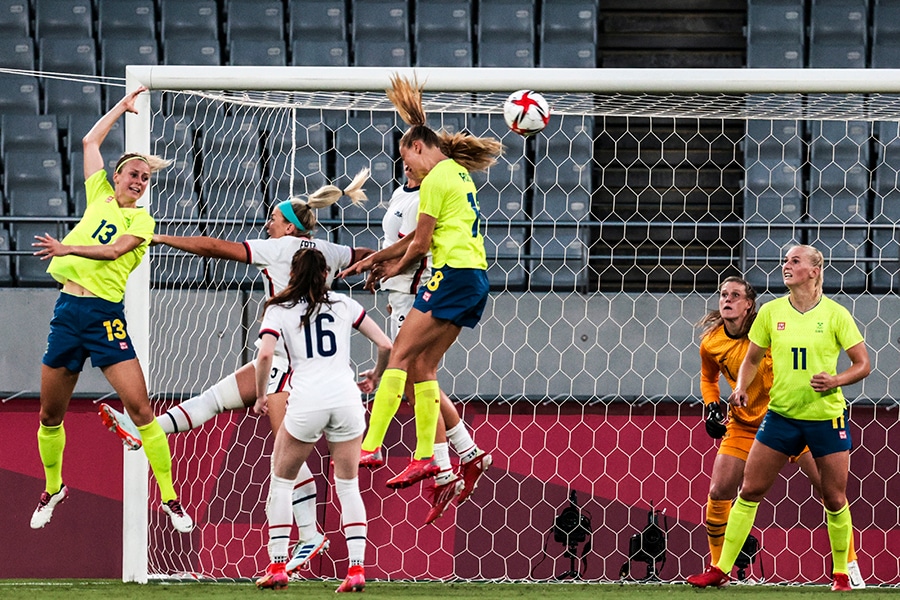
When gender equality at the Olympics is not so equal
Of the nearly 11,000 athletes arriving in Tokyo, almost 49% will be women, according to the International Olympic Committee, up from 45.6% at the 2016 Rio de Janeiro Games and 44.2% at the 2012 London Olympics
 Sweden, in yellow, scores a goal against the United States during their Group G soccer match at the postponed 2020 Tokyo Olympics in Tokyo on Wednesday, July 21, 2021. Of the nearly 11,000 athletes arriving in Tokyo, 49 percent will be women, according to the IOC. Image: Alexandra Garcia/The New York Times
Sweden, in yellow, scores a goal against the United States during their Group G soccer match at the postponed 2020 Tokyo Olympics in Tokyo on Wednesday, July 21, 2021. Of the nearly 11,000 athletes arriving in Tokyo, 49 percent will be women, according to the IOC. Image: Alexandra Garcia/The New York Times
TOKYO — For the first time since the founding of the modern Olympics 125 years ago, the Games have nearly reached gender parity.
Of the nearly 11,000 athletes arriving in Tokyo, almost 49% will be women, according to the International Olympic Committee, up from 45.6% at the 2016 Rio de Janeiro Games and 44.2% at the 2012 London Olympics. (The IOC does not have data on the number of nonbinary athletes at these Games.)
Many countries credit the strides to broad policy changes, increased funding and promotion of female athletes in mainstream media. But for other nations, equality is far off: Men enjoy far more funding, news coverage and opportunities than their female counterparts.
Even as gains are made on the field of play, the makeup of the overwhelmingly male IOC remains behind. Women make up 33.3% of its executive board; and 37.5% of committee members are female.
The organization in recent months has wrestled with a series of gender-related blunders on the public stage. Most recently, on Wednesday, John Coates, an IOC vice president, had a tense exchange with Annastacia Palaszczuk, the premier of Queensland, Australia. He ordered her to attend the opening ceremony, despite her having said she would not do so.
©2019 New York Times News Service




